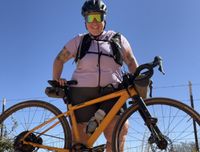How do cyclists pee mid-race? Marley Blonsky asks Education–Oatly’s Veronica Ewers all the 'dumb' Tour de France Femmes questions you’ve been wanting to ask
Video: Marley Blonsky is at her very first WorldTour race and she's got questions
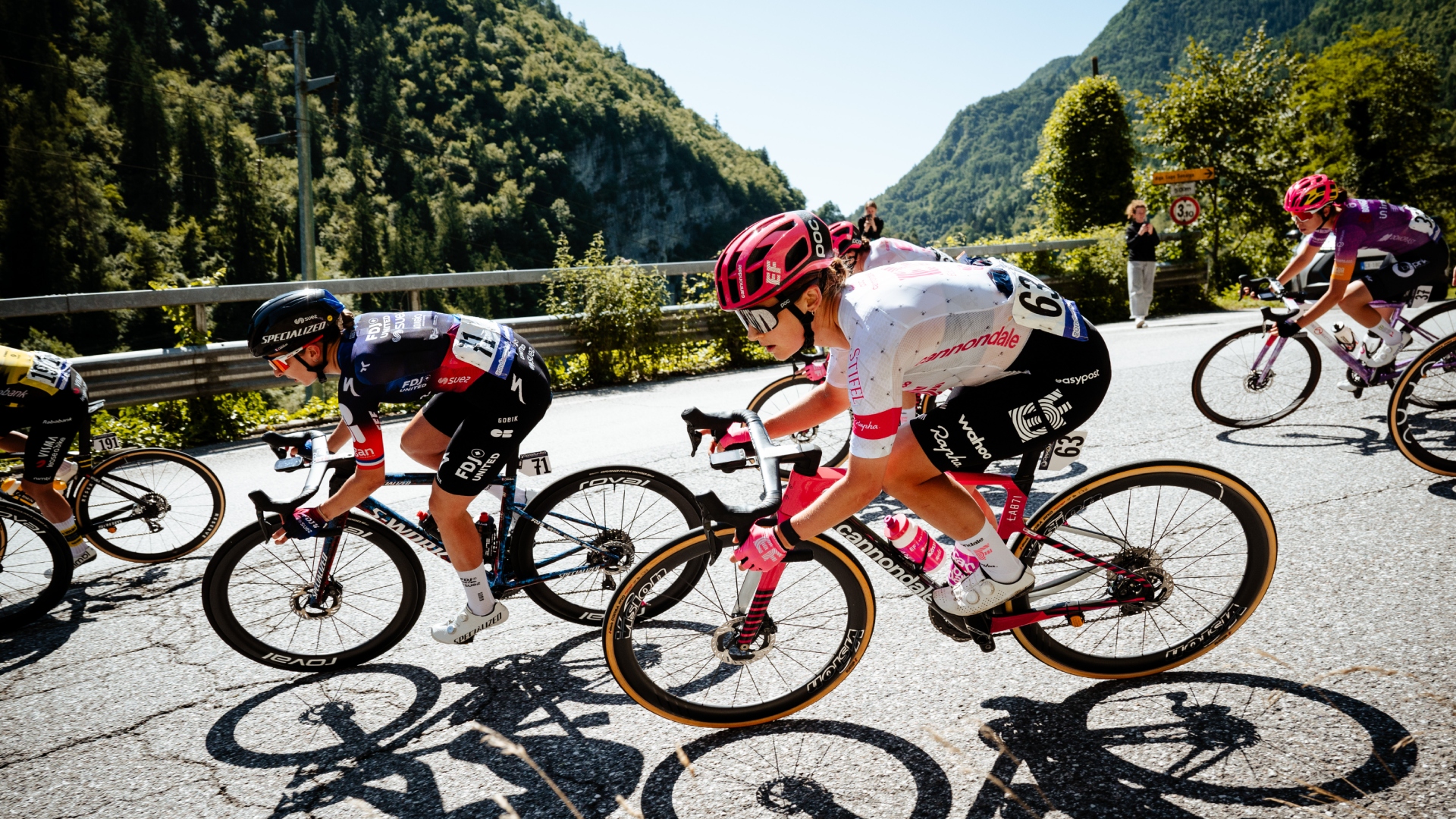
Our columnist Marley Blonsky is currently at the Tour de France Femmes avec Zwift. For many racers, the nine-day battle for the iconic yellow jersey is the biggest event of the year. For Marley, it's her first ever in-person experience at a WorldTour road race, and she's got questions.
How do riders pee mid-race? What do they eat to survive such intense efforts? What do they hear in those earpieces? And what’s with all the different races happening within the race?
Marley, an unapologetically curious and new cycling fan, is here to ask all the “dumb” questions you’ve always wondered about but never dared to ask.
To help decode the experience, she turns to Veronica Ewers, a pro cyclist for EF Education–Oatly who rode herself into the top 10 of the general classification at the 2022 Tour de France Femmes. Though Ewers isn’t racing this year’s edition, her experience and no-nonsense answers offer a unique, insider look at what really goes on in the peloton.
The Video Interview:
Interview highlights
Don't have time to watch the whole video? Not a problem. Here are the highlights:
How does stage race like the Tour de France Femmes work?
"There are several races within the race. Each stage is a race, but then there's a race of all of the stages together, which is the general classification. The person that finishes all of the stages with the least amount of time is the general classification winner.
"Then of course there's the winners of each stage. Those are the first people to cross the line.
The latest race content, interviews, features, reviews and expert buying guides, direct to your inbox!
"There is the best young rider classification, which is the same as the general classification but for riders under the age of 23.
"Then there is a queen of the mountain classification. That's [about collecting] the most points on the climbs. Say there are four big climbs in a single stage. Maybe three of them are considered Queen of the mountain climbs and each of those will have points. If you get to the top as the first person, then you get the most amount of points crossing the line over the top. And the more points you accumulate, then that goes to the Queen of the Mountain classification. And if you have the most points, then you get to wear the polka dot jersey, which is really cool.
"Then the last [race] is the sprint jersey. There are also intermediate sprints within each stage, which just helps make the race even more exciting. Similar to the Queen of the Mountain classification, it's for each sprint. So if you cross the line of the sprint first, you get a certain amount of points. And if you have the most points, then you get to wear the [green] sprinter's jersey."
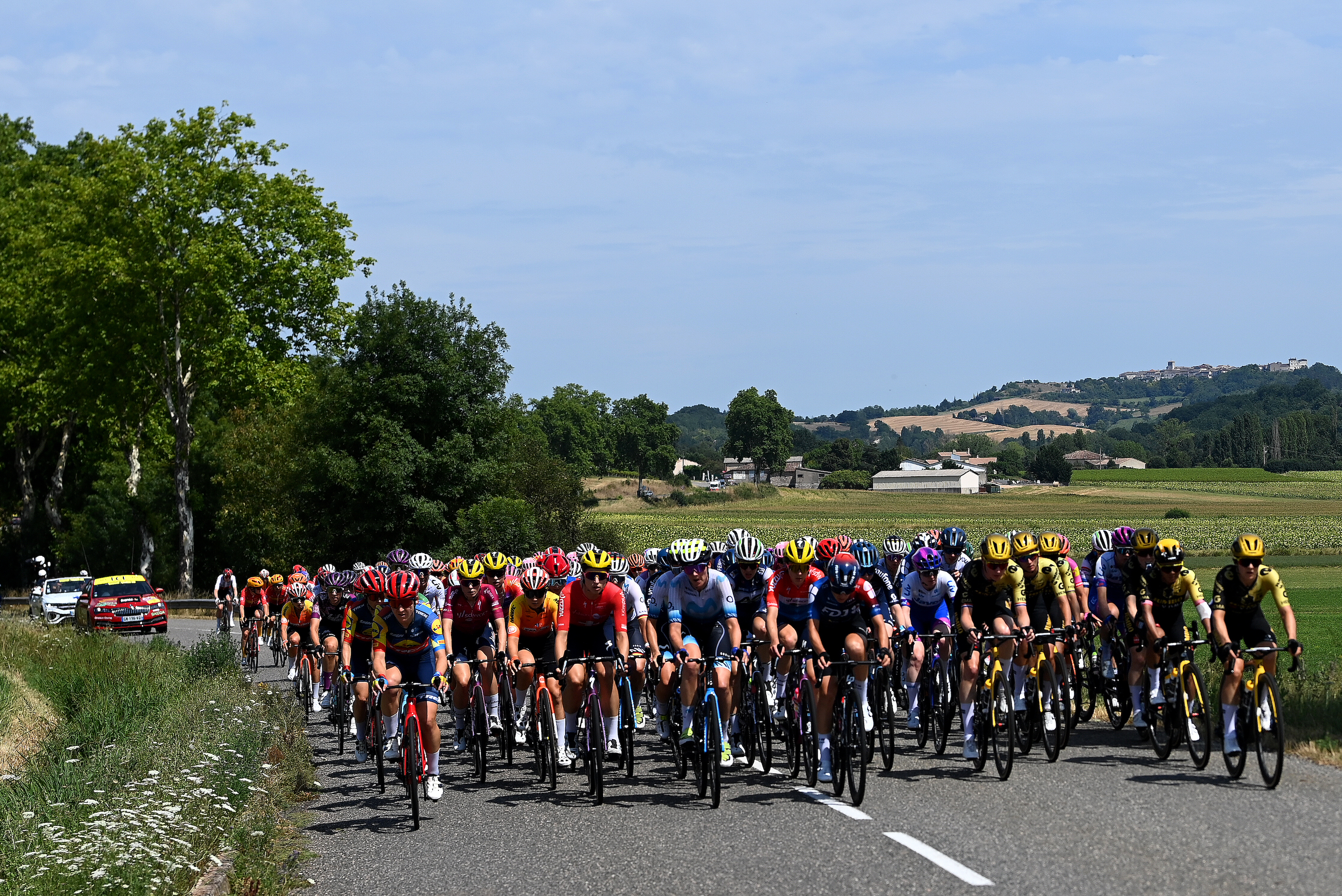
How do you go pee during the race? Is it an agreed upon mile marker? Do you all chat in the peloton? How does that work?
"That is a great question and I personally am terrified of going pee during a race because, for us women, it's a little bit more difficult than just, you know, whipping out your penis and peeing really easily. We have to sort of fully unclothe to go to the bathroom, which takes a bit more time.
'If I needed to pee, I would say it in the radio to my team: 'Hey, I need to pee. Does anyone else need to?'. Because it's better to stop with other people so that you can work together to get back to the peloton.
"In longer races, usually you'll hear somebody in the peloton yell 'pee stop', and then half the bunch stops for a pee. That's generally how it goes. We have to make sure that we're out of towns a good amount to do that, just for public decency, which I can definitely understand."
So you're not wearing drop tail bibs?
"No, normally, uh, we will be wearing speed suits, which is just the zipper up front. So you have to take the top off and then pull everything down. So you're pretty much naked on the side of the road."
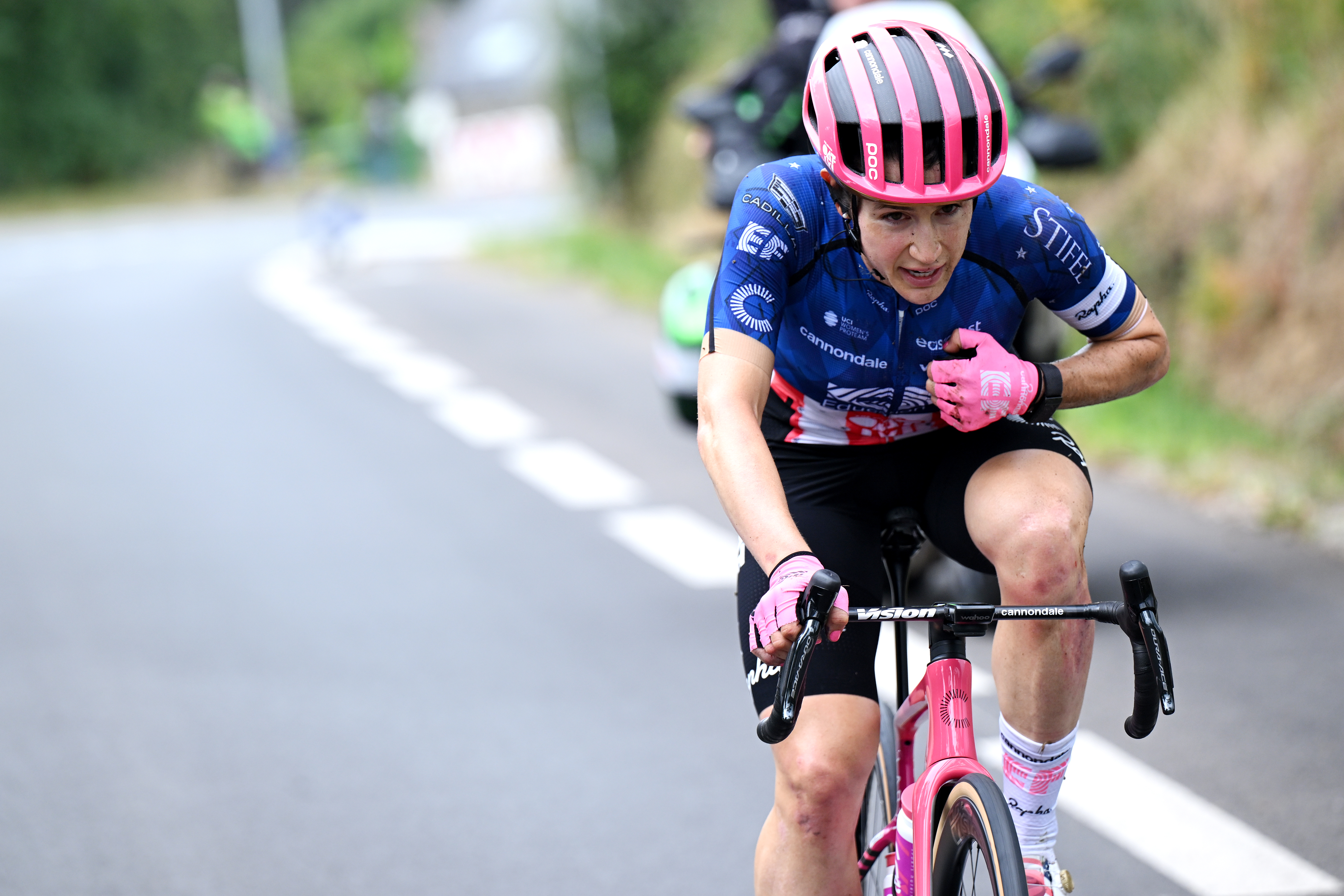
Are folks chatting in the peloton? Are you guys talking to each other? Is it like zone five effort the whole time and just breathing to stay alive?
"It's very dependent on the situation. Most races are not full gas the entire time, although sometimes it feels that way. But there are definitely moments, especially in the neutral, when we'll just be chatting amongst friends who might be on other teams or with teammates.
"Then during the race as well, if there's a more calm moment, we'll maybe chat. If I'm next to teammates, I'm usually talking about maybe strategy or just checking in with them and seeing how are you doing? Do you need anything? Especially if I have a race leader, I'll ask if they need something.
'When it's a high-stress moment, for example, during a lead out, there's a lot of yelling. Well-intentioned, but you know, 'move right', 'move left'. 'Go!' means, go harder, 'off' means get off the front so that rest of the people can go. So you have to listen quite intently, and make sure that you can hear your teammates."
What do you hear in your ear pieces?
"Everybody [on the team] hears the same thing on the radio, so if one of my teammates speaks, we all hear it and then the director in the car also hears it. If the director speaks into the radio, we all hear what they're saying.
"Most of what we hear is information about what's coming up. For example, if there's a town with a bunch of roundabouts coming up, it's really helpful to know that because roundabouts can be quite hectic and dangerous at times. Normally we'll have done our research to know when certain towns are coming up but it's just a good reminder to hear that.
'We'll also be reminded to eat and drink, which is really important. And then, yin the finale, if one of us is upfront, you just hear, you know 'go, go, go, push, push, push. You gotta keep going'. You know, a lot of motivation, which is really fun to hear if you're off the back, just trying to finish, but is also really motivating when you're that person at the front."
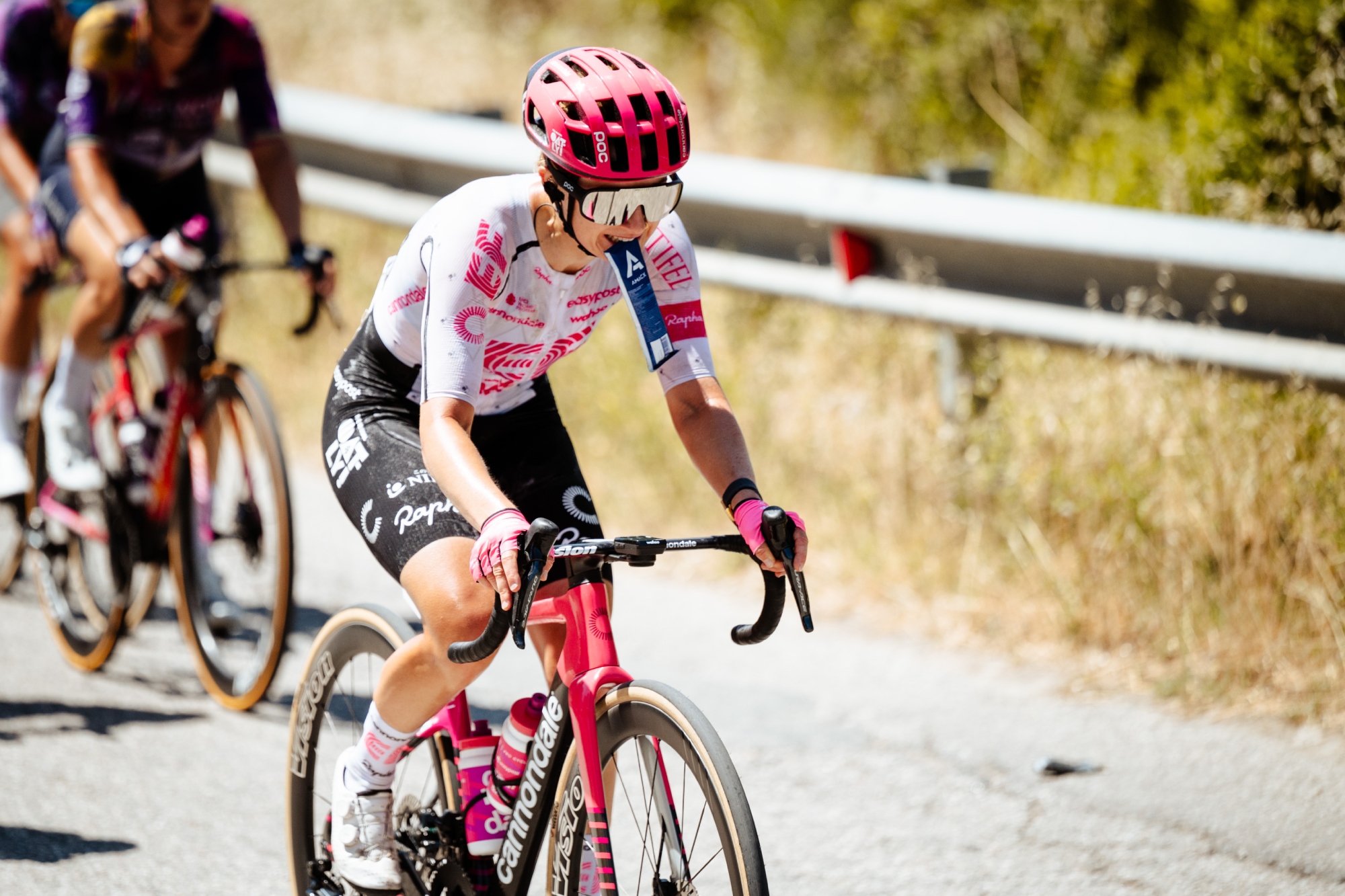
What are you eating and drinking and how frequently?
"My team uses Amacx Nutrition, which is really solid. It has an energy line, which is 30 grams of carbs per serving. And then there's the turbo line, which is 40 grams of, carbs per serving. We generally get to determine which we'd like to use, except when it's a certain temperature, then we're supposed to use energy because of the sodium content.
"But yeah, the general rule is to have at least 80 grams of carbs per hour. But I believe most teams are pushing 110 [grams of carbs] per hour.
That's gels or it can be rice cakes that our soigneurs make. It can be bars, it can be drink mix.'
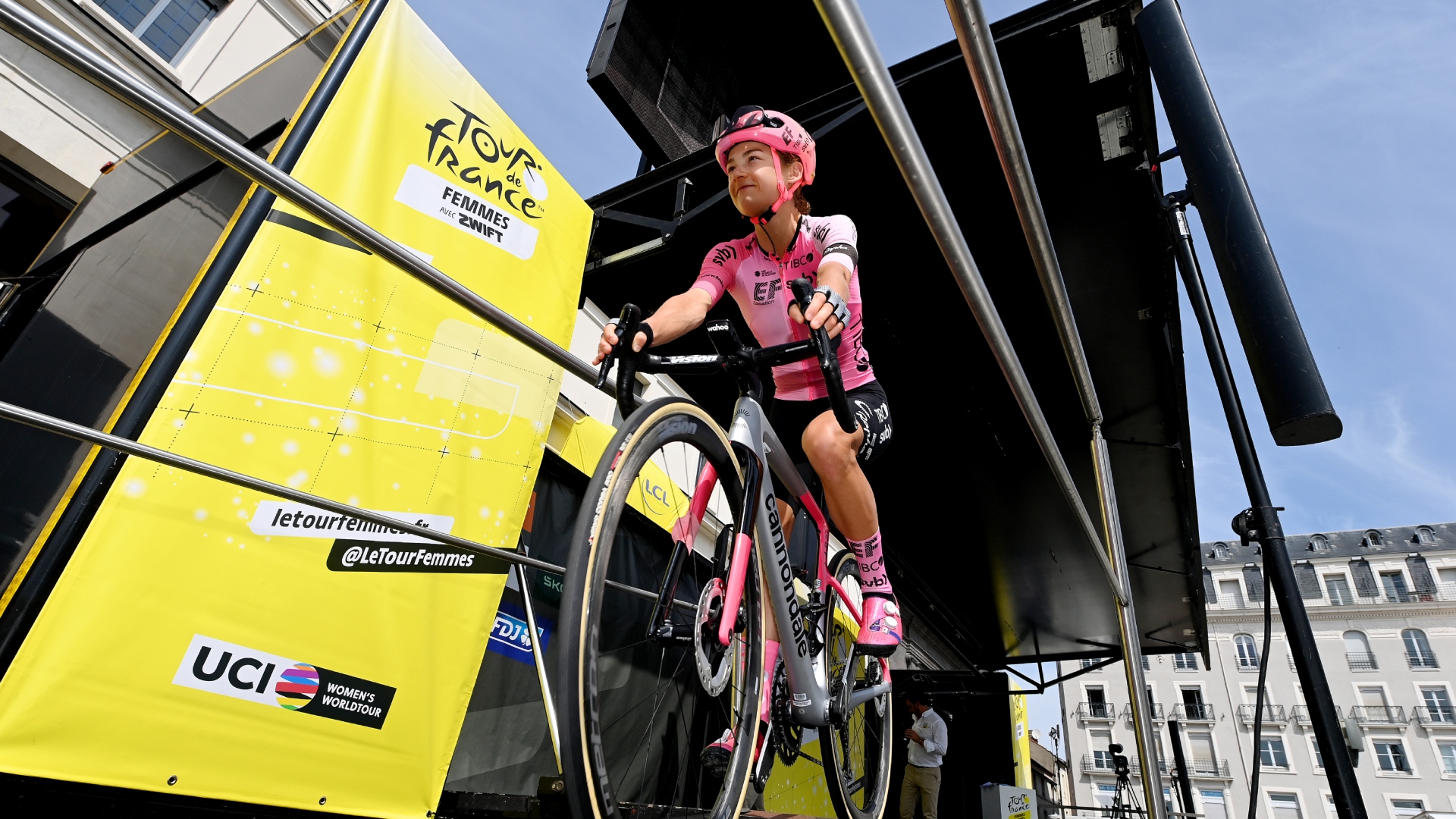
How do you recover and get ready for the next day?
"That is probably the most important thing to be honest. My team's protocol normally is when you finish, you cross the finish line, we have immediately a cherry juice recovery drink as well as water if we would like. Then we'll get to the bus, and we'll have a carb- and protein-dense recovery drink on our bikes while we warm down. Then we'll shower and then have our post-race meal.
"So we're just ensuring that we're refueling to prepare for the next day. While we're on the bus to transfer, we have the squeezy boots for massaging our legs, or cooling equipment if it's really hot. Then we'll get to our hotel, have massages with the soigneurs, and mostly just stay off our feet as much as possible.
"We'll have dinner and try and sleep as much as possible."
What's your favorite thing to eat after a meal or after a big ride?
"Normally I would say I'm not the most hungry after. I think at a race, I just want something simple, so like chicken and rice with some sort of decent sauce. But sometimes we'll have gnocchi and chicken, which is nice.
"Simplicity. Salty, actually, because we have so much sweet stuff while we're on the bike."
What do you eat before the stage?
"It's very dependent on what time the race starts. If it's a mid-morning start, I'll have a pretty large breakfast, which will be eggs and rice pudding with fruit. If it's an afternoon race start, we will have rice and eggs."
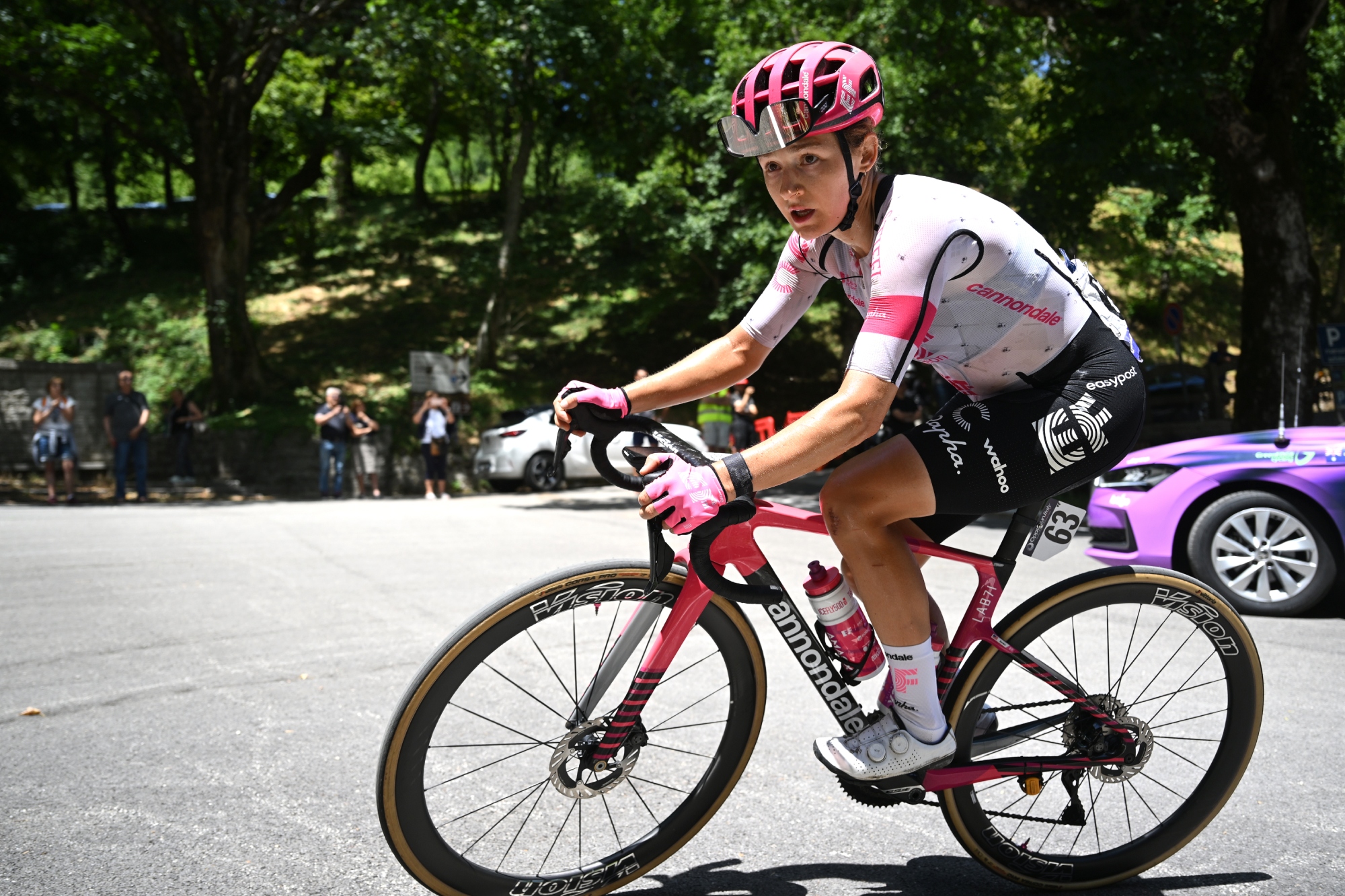
So I recently learned that the women's Tour is shorter than the men's. Why?
"That's a good question. Honestly, don't have an answer. I think there are a lot of logistics. I think, historically, there's this misconception that women aren't capable of longer races, which obviously isn't true because the original Tour was 17 or 18 stages.
"I think at one point it, it could have been that a lot of women's teams, [didn't have] deep squads, but we have very deep squads now and it's a very, very strong peloton. We're more than capable. I think it's just a lot of logistics and misconceptions."
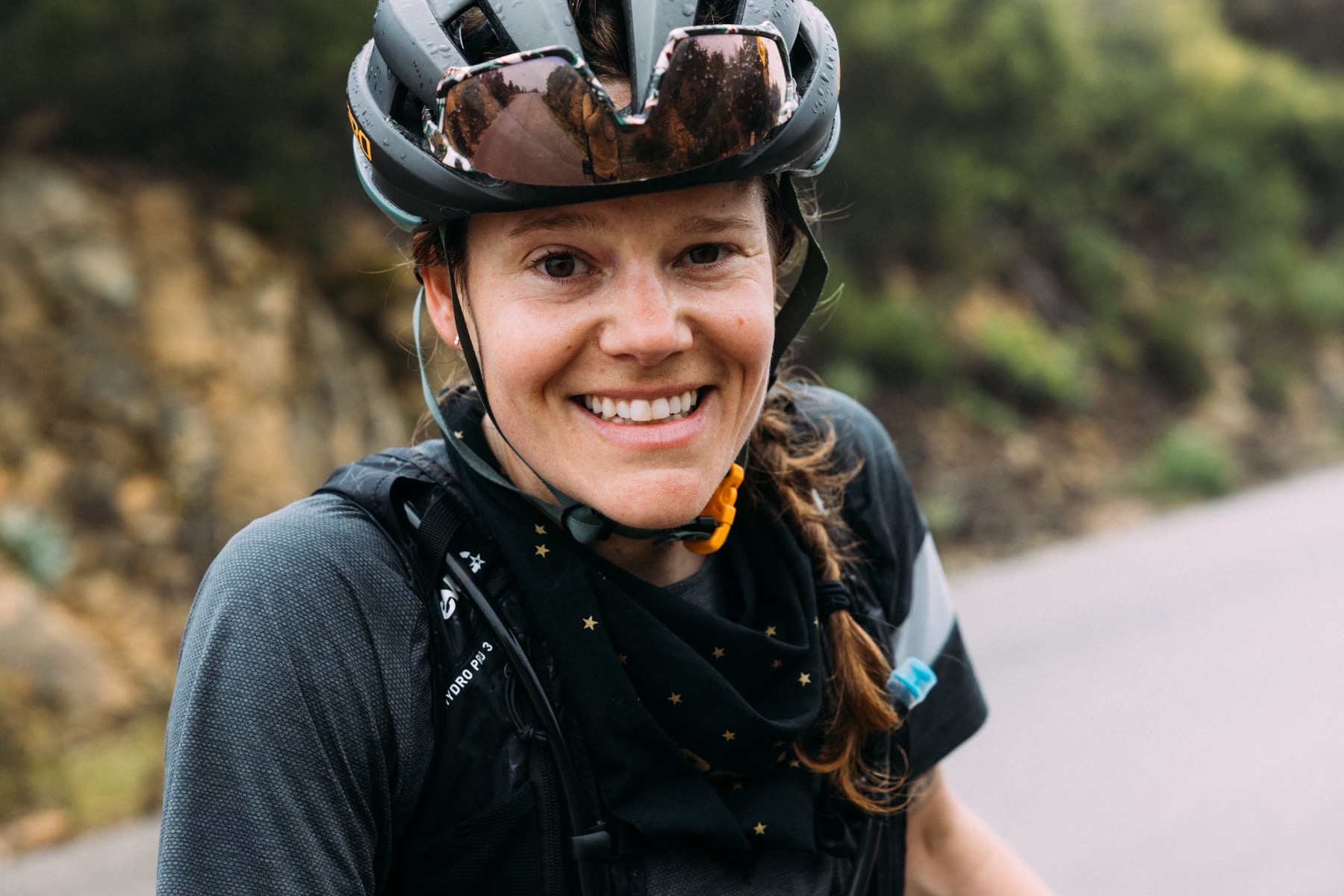
Cycling Weekly's North American Editor, Anne-Marije Rook is old school. She holds a degree in journalism and started out as a newspaper reporter — in print! She can even be seen bringing a pen and notepad to the press conference.
Originally from the Netherlands, she grew up a bike commuter and didn't find bike racing until her early twenties when living in Seattle, Washington. Strengthened by the many miles spent darting around Seattle's hilly streets on a steel single speed, Rook's progression in the sport was a quick one. As she competed at the elite level, her journalism career followed, and soon, she became a full-time cycling journalist. She's now been a journalist for two decades, including 12 years in cycling.
You must confirm your public display name before commenting
Please logout and then login again, you will then be prompted to enter your display name.
